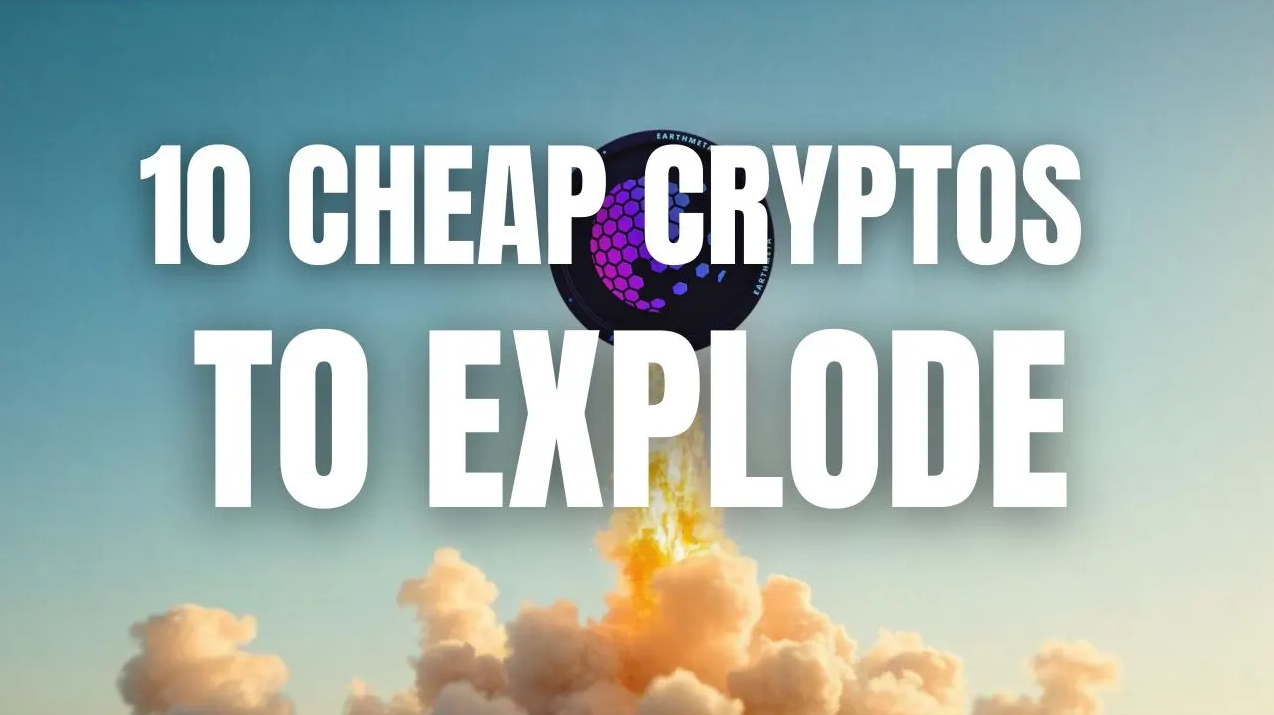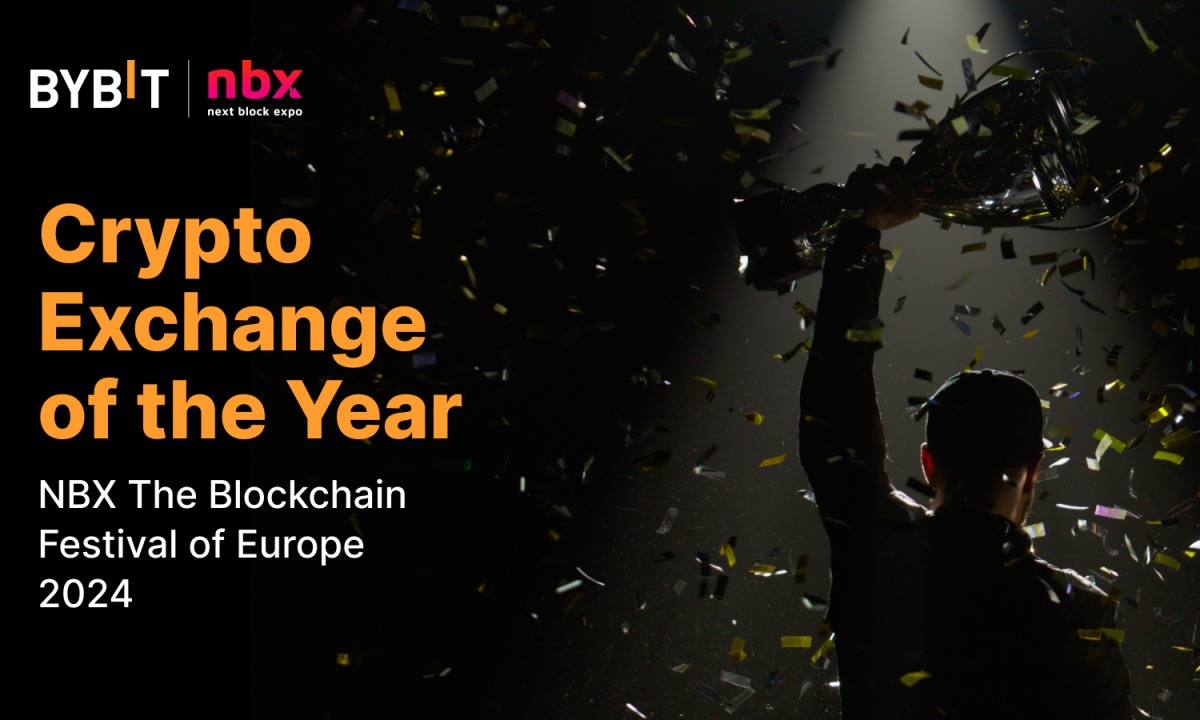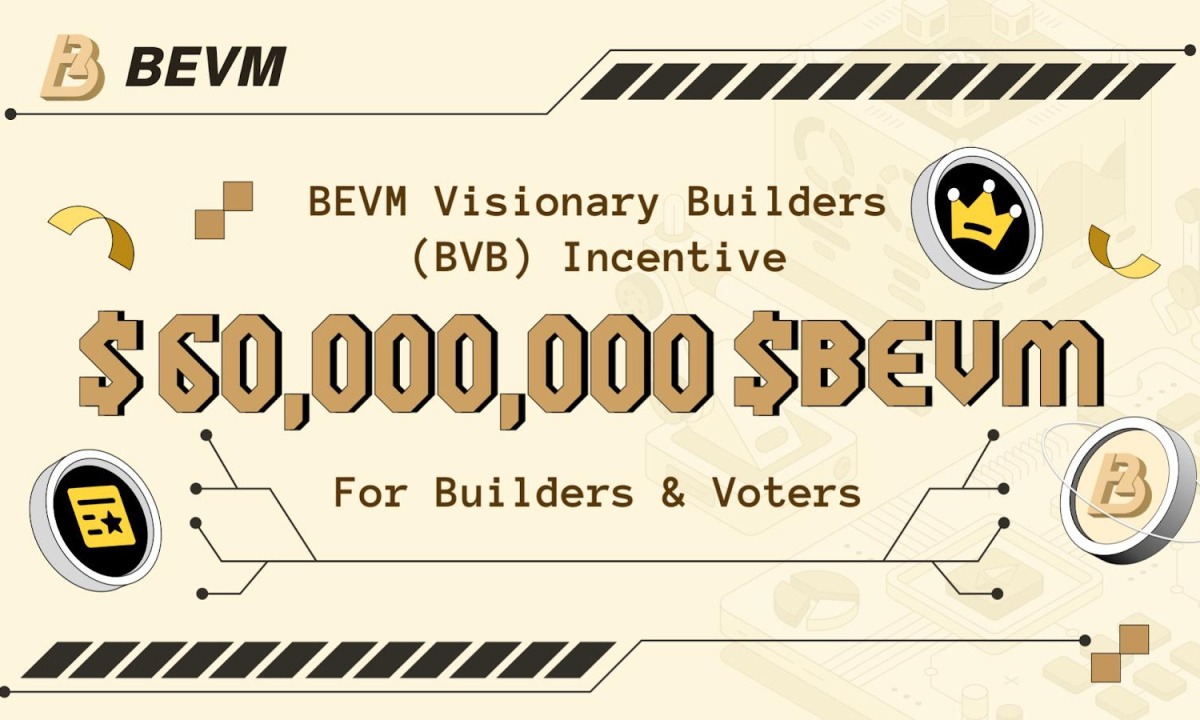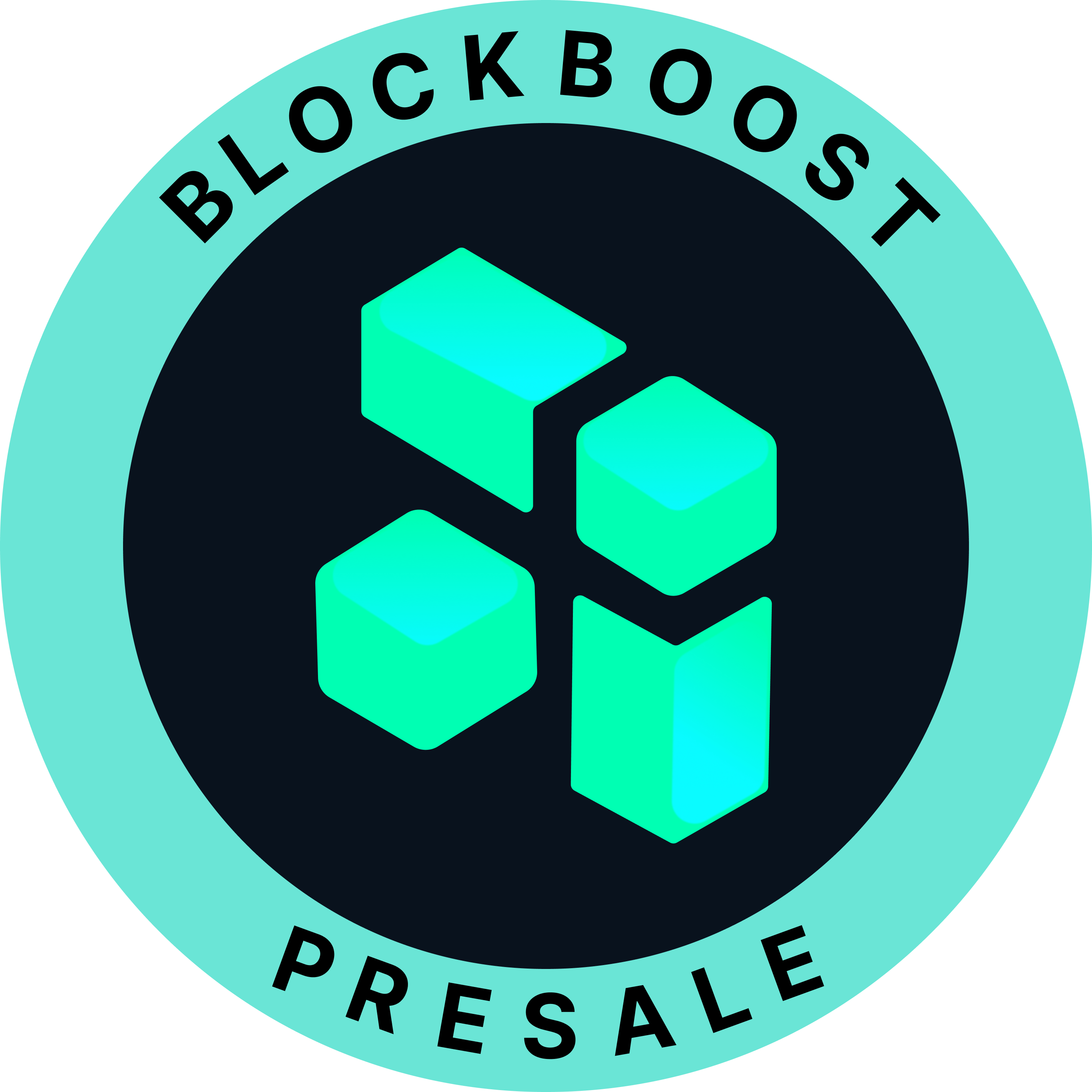Cheapest Crypto to Buy Before They Explode in 2025 – The Next 1000x Opportunities
Everyone wants to find the cheapest crypto to buy, the next big crypto before it skyrockets. We’ve all heard the stories: “If you had bought Bitcoin in 2010, you’d be a millionaire today!” But let’s be honest, back then, who really knew what Bitcoin was? It sounded like some nerd’s side project, and now it’s a financial beast.
But here’s the good news: cheap cryptos with insane growth potential still exist. And unlike BTC back in the day, you now have access to more research, better strategies, and faster transactions to catch the next wave. Take Shiba Inu (SHIB), in 2020, it was practically worth nothing. Some guy spent $8,000 on SHIB, forgot about it, and a year later, he was sitting on $5.7 billion. Cheap cryptos don’t need to reach $100 to make you rich, if you buy for exemple a crypto like EarthMeta, a new project metaverse with virtual lands, at something like $0.02 and it hits $0.20, that’s already a 10x gain!
These are like buying land in New York before it became expensive. Remember when Fortnite and Roblox seemed like just games? Now they have billion-dollar ecosystems. AI is already taking over, your chatbot might be your next financial advisor!
Dogecoin (DOGE), originally a joke, now it’s Elon Musk’s favorite meme coin, and it even got used to send satellites to space.We love an underdog story, whether it’s Rocky Balboa, Tesla before EVs were cool, or Apple when they were nearly bankrupt. The crypto world has the same magic.
Ethereum was once an underdog to Bitcoin. People laughed at the idea of “smart contracts.” Now? It’s the foundation of decentralized finance. New cryptos today could dominate industries that don’t even exist yet. Here’s how to spot the next underdog winner:
- Does it solve a real problem? (Think Ethereum, Binance Smart Chain)
- Is it early-stage with room to grow? (Like Solana in 2021)
- Is it undervalued? (Many coins trade way below their true worth!)
If people are talking about a project, sharing memes, and shilling it on Twitter like it’s their life mission, you might be looking at a moonshot.
A crypto can be cheap and hyped, but if it’s useless, it’s like buying a Ferrari with no engine. Some cryptos actually solve real-world problems, and these are goldmines when the bull market comes back.
Look at VeChain (VET), it helps track supply chains in real life, and big companies like Walmart are using it. Finding cheap cryptos that could explode is like spotting Netflix before streaming took over cable. The key is:
- Look for undervalued projects with massive potential.
- Find coins with strong hype, use cases, and real-world adoption.
- Get in early before everyone else FOMOs in.
And most importantly, only buy what you’re willing to lose. Crypto can be wild, but if you pick the right cheap coin, you might just be holding the next 1000x gem.
So, what’s your game plan? Are you hunting for the next Shiba Inu, or are you looking for undervalued utility-driven cryptos? Either way, the future is bright.
List of best cheap crypto you should buy now for big gain [January 2025 list]
- EarthMeta ($EMT) – Own and trade virtual cities, earn rewards, and stake for high APY.
- Decentraland ($MANA) – Leading metaverse project for virtual land and NFT economies.
- Conflux ($CFX) – High-speed, scalable blockchain for Web3 and decentralized apps.
- Chiliz ($CHZ) – Powering sports fan tokens and NFT-based team engagement.
- eCash ($XEC) – Scalable digital cash system with fast transactions and staking.
- Amp ($AMP) – Secure payments and fast collateralized transactions for DeFi.
- Mina ($MINA) – World’s lightest blockchain, ensuring fast, efficient transactions.
- AIXBT – AI-driven crypto insights for smarter trading and investments.
- Mog Coin ($MOG) – Viral meme coin with a strong community-driven economy.
- zkSync ($ZK) – Ethereum Layer-2 scaling with ultra-low fees and fast transactions
1. EarthMeta (EMT)
Analysts believe that EarthMeta ($EMT) has the potential to be one of the most impactful sub-$1 cryptocurrencies poised for significant growth. EarthMeta is a next-generation blockchain-powered metaverse that offers users the ability to buy, sell, and trade digital cities and virtual lands as NFTs. The platform redefines virtual land ownership by introducing a finite supply of cities, each representing a real-world location. Unlike other metaverse projects that divide land into unlimited tiles, EarthMeta creates scarcity and exclusivity, making each city a valuable digital asset. By integrating AI-driven insights, augmented reality (AR), and decentralized governance, EarthMeta provides an interactive, strategic, and community-driven ecosystem where participants can engage in a variety of economic and governance activities.
At the core of EarthMeta is its city-based NFT system, a unique approach that offers structured digital real estate ownership. Each NFT represents a real-world city, financial hub, or significant landmark, ensuring that each digital asset has a tangible reference point. The limited supply of cities adds long-term value and scarcity, making ownership highly sought after.
Users who acquire cities in EarthMeta gain governance roles within the ecosystem. City owners, also referred to as governors, receive a percentage of transaction fees generated within their cities. Those who hold presidential positions over countries benefit from an even broader economic model, earning revenue from national transactions. This system creates an economic incentive for users to strategically acquire cities and participate in the governance of the digital economy.
EarthMeta is built using advanced blockchain technology, AI-powered insights, and augmented reality (AR) to create a fully functional and immersive digital world. The platform ensures secure transactions, verifiable ownership, and automated governance processes through the use of smart contracts. AI integration enhances decision-making, providing users with real-time analytics on city valuations, demand trends, and earning potential. Augmented reality allows users to interact with their digital assets in real-world environments, making the metaverse experience more engaging and interactive.
The platform operates on a decentralized governance model, where NFT holders have voting rights to shape the future of the metaverse. This democratic approach ensures that decisions regarding platform upgrades, policy changes, and ecosystem developments are made collectively by the community, rather than being controlled by a central authority.
EarthMeta provides multiple ways for users to engage in its ecosystem and generate income. City ownership comes with the benefit of earning passive income through transaction taxes, where city governors receive a percentage of every trade, sale, and interaction that takes place within their city. Those who acquire the position of country president gain an even larger share of the transactional flow, earning a percentage of all city-based transactions within their designated region.
Beyond governance, users can stake the EarthMeta token ($EMT) to earn high annual percentage yields (APY), incentivizing long-term participation. The staking system rewards users based on their commitment and engagement within the ecosystem, reinforcing the sustainability of the token economy. Additionally, EarthMeta features a fully integrated NFT marketplace, where users can trade digital cities, assets, and metaverse-related utilities. This marketplace acts as a self-sustaining digital economy, allowing users to buy, sell, and leverage assets based on market demand.
EarthMeta is continuously evolving, with a structured roadmap designed to expand the platform’s capabilities. In December, the project will launch its NFT marketplace, providing users with seamless access to buy and sell digital assets. The introduction of gamification features and a decentralized autonomous organization (DAO) is scheduled for early next year, allowing for further community-driven decision-making and metaverse engagement.
By Q2 2025, EarthMeta will launch its augmented reality (AR) application, enhancing the way users interact with their virtual cities. This app will allow users to visualize their digital assets in real-world locations, offering an immersive experience that bridges the gap between the physical and digital worlds. Later in the year, the EarthMeta Wallet, designed for mobile transactions, will provide users with a seamless way to manage their NFTs, tokens, and in-metaverse purchases.
As the platform progresses, additional AI-powered decision-making tools will be integrated, enabling users to make more informed strategic choices regarding city acquisitions, governance participation, and economic planning. The long-term goal includes expanding into virtual reality (VR) and bridging AR and VR environments, creating a fully immersive metaverse experience.
2. Decentraland (MANA)
Decentraland (MANA) is a decentralized virtual reality platform powered by the Ethereum blockchain, where users can create, experience, and monetize content and applications. It enables participants to purchase virtual plots of land, represented as non-fungible tokens (NFTs), using MANA, an ERC-20 token. Within this metaverse, users have the freedom to build interactive experiences, such as games and 3D environments, and trade virtual assets. The platform was launched after a $24 million initial coin offering (ICO) in 2017, with its public release in February 2020. Since then, Decentraland has become a hub for both creative expression and digital commerce.
The platform operates with two key tokens: MANA and LAND. MANA serves as the primary currency, allowing users to buy LAND, pay for virtual goods, and participate in the Decentraland Marketplace. It also grants governance rights through the Decentralized Autonomous Organization (DAO), enabling the community to vote on the platform’s policies and development. LAND, an ERC-721 NFT, represents ownership of virtual real estate and also provides voting rights in the DAO.
Decentraland’s ecosystem is underpinned by Ethereum smart contracts across three layers: consensus for LAND ownership, a land content layer for displaying virtual creations, and a real-time layer for user interactions. Co-founded by Ari Meilich and Esteban Ordano in 2015, Decentraland has evolved from a 2D experiment to a fully immersive 3D environment. It combines blockchain technology with online gaming, giving control over policies to token holders. Despite its high entry barriers, the platform has grown into a thriving NFT marketplace, offering limitless opportunities for creativity and community-driven governance.
3. Conflux (CFX)
Conflux (CFX) is a public layer-1 blockchain designed to enhance decentralized applications (dApps), e-commerce, and Web 3.0 infrastructure. Its focus is on scalability, decentralization, and security, making it a competitive alternative to existing protocols. Conflux utilizes the Tree-Graph consensus mechanism, combining Proof-of-Work (PoW) and Proof-of-Stake (PoS) algorithms to achieve fast and efficient transactions. With its compatibility with Ethereum’s Virtual Machine (EVM) and Solidity programming language, Conflux enables the development of robust, scalable, and cost-effective dApps. The native token, CFX, fuels the network by supporting transaction fees, governance, and rewards for miners through staking.
The platform was co-founded in 2018 by blockchain expert Fan Long, who holds a Ph.D. in Computer Science from MIT and has received numerous academic accolades. The leadership team also includes YuanJie Zhang, Ming Wu (CTO), and research director Guang Yang, along with other skilled professionals. A key contributor to Conflux’s foundational technology is Professor Andrew Chi-Chih Yao, a Turing Award winner and head scientist of the Conflux Foundation. The team works through the Tree-Graph Research Institute in Shanghai, promoting blockchain education and advancing the protocol’s development.
Conflux stands out with its innovative Tree-Graph consensus algorithm, enabling high transaction throughput of 300–6000 TPS without compromising decentralization. The ShuttleFlow cross-chain bridge allows seamless asset transfers between networks like Ethereum and Binance Smart Chain. Unique features like the Fee Sponsorship Mechanism reduce user costs, ensuring affordability even for users with low balances. Additionally, the platform supports staking, offering consistent rewards and a financial framework for dApp growth. By addressing scalability, efficiency, and regulatory compliance, Conflux provides an accessible and powerful platform for developers and users alike.
4. Chiliz (CHZ)
Chiliz (CHZ) is a leading digital currency for sports and entertainment, developed by a Malta-based FinTech company. It powers the blockchain-based sports platform Socios, which allows fans to engage with their favorite sports teams through fan tokens. These tokens enable supporters to participate in governance decisions, such as voting on club-related matters, creating a more interactive fan experience. Chiliz has partnered with major sports organizations, including FC Barcelona, Manchester City, Juventus, Paris Saint-Germain, UFC, and esports teams, offering a unique way for clubs to connect with their supporters and generate additional revenue. By purchasing CHZ, fans gain access to fan tokens and a stake in their club’s operations.
Founded in 2017 by Alexandre Dreyfus, Chiliz is driven by his vision of transforming fan engagement. With over 20 years of experience in creating web-based companies like Webcity, Winamax, and Chilipoker, Dreyfus has made Chiliz a pioneer in the sports and entertainment industry. His mission to make fan tokens a core engagement tool for sports organizations is reflected in the platform’s rapid expansion. Numerous prominent European football clubs and smaller organizations have joined, highlighting Chiliz’s growing influence in redefining fan interaction.
Chiliz is unique in offering a limited supply of fan tokens for each team during an initial fan token offering (FTO), where tokens are sold on a first-come-first-serve basis. Using the native CHZ token, fans purchase these tokens to vote on decisions via the Socios platform, facilitated by smart contracts. The level of influence granted to fans varies by club, with decisions ranging from jersey designs to match lineups. Chiliz has also launched initiatives like the Chiliz Blockchain Campus, aimed at accelerating blockchain adoption in Asia and Europe. Despite significant growth, the company sees itself as only beginning its potential, with ambitions to expand its network to include 80-100 teams.
5. eCash (XEC)
eCash (XEC) is a Layer-1 digital cash network developed by Bitcoin ABC, launched on November 15, 2020. It enhances traditional Bitcoin technology by integrating the Avalanche consensus protocol into its core proof-of-work (PoW) layer, achieving greater scalability, security, and transaction efficiency. The network’s development roadmap focuses on three key goals: scaling transaction throughput to over 5 million transactions per second, providing near-instant transaction finality, and enabling fork-free upgrades for iterative development. These advancements position eCash as a robust digital cash solution designed for global use.
The platform was founded by Amaury Séchet, a former lead developer of Bitcoin ABC and founder of Bitcoin Cash (BCH). Séchet and his team split from the BCH blockchain to form eCash, originally named Bitcoin Cash ABC (BCHA) until its rebranding in July 2021. Leveraging his expertise in database scaling and digital cash solutions, Séchet and the Bitcoin ABC team focus on advancing Bitcoin technology to a planetary scale. Their unique approach emphasizes scalability and innovation, aligning with the goals outlined in their original roadmap.
What sets eCash apart is its integration of the Avalanche protocol alongside Nakamoto consensus, enabling consensus within 2 seconds compared to Bitcoin’s 10-minute block times. This combination ensures a decentralized, trustless network with enhanced flexibility and speed. The Avalanche protocol also supports permissionless subnets, allowing for protocol customization while remaining connected to the main chain. Planned innovations include an Ethereum Virtual Machine (EVM) subnet for DeFi interoperability and a Zero-Knowledge (ZK) subnet for privacy. Additionally, eCash offers eTokens, which simplify the creation and trade of fungible tokens and NFTs. Features like gas-less transactions make the network particularly useful for stablecoins and other applications where transaction fees can be paid in the token itself.
6. Amp (AMP)
Amp (AMP) is an open-source, decentralized protocol designed to provide collateral as a service for securing value transfers. Launched in 2020, Amp enables networks like Flexa to ensure fast, efficient, and irreversible transactions across various asset-related use cases. Its innovative system employs collateral partitions and collateral managers, allowing users to directly verify balances on the Ethereum blockchain. This approach facilitates secure collateralization for accounts, applications, and transactions, offering predefined partition strategies to enable staking without moving tokens from their original addresses.
Amp was created by Flexa, a New York-based blockchain payments company co-founded in 2018 by Trevor Filter, Zachary Kilgore, and Tyler Spalding. Flexa specializes in FinTech solutions aimed at making real-world payments more secure, efficient, and affordable. Tyler Spalding, the CEO of Flexa, spearheaded the Amp project, leveraging his extensive background in engineering, business, and blockchain technology. Spalding’s contributions to the crypto space date back to 2011, and he has played a pivotal role in developing solutions to enhance blockchain adoption.
What sets Amp apart is its decentralized and open-source ecosystem, which reduces risk for users through smart contracts and facilitates the integration of value transfer and assets. The Flexa network and Amp token act as insurance for merchants by covering potential losses from transaction issues. In cases where required crypto assets are not received, staked AMP tokens are liquidated to reimburse merchants. This system allows merchants to accept secure, nearly instant payments in cryptocurrency while providing AMP holders with opportunities for staking and earning passive income. Amp’s unique structure positions it as a robust solution for improving crypto payment systems.
7. Mina (MINA)
Mina Protocol is a “succinct blockchain” designed to minimize computational requirements, enabling decentralized applications (DApps) to run more efficiently. Often referred to as the world’s lightest blockchain, Mina maintains a constant size of just 22 KB, even as usage grows, making it significantly smaller than traditional blockchains like Bitcoin, which exceeds 300 GB. This lightweight nature enhances its security and decentralization, offering a streamlined and balanced approach to blockchain functionality. The project, originally known as Coda Protocol, rebranded to Mina in October 2020.
Mina’s primary objective is to create an efficient distributed payment system where users can natively verify the blockchain directly from the genesis block. This is achieved using Zero-Knowledge Succinct Non-Interactive Arguments of Knowledge (zk-SNARKs), a cryptographic proof that allows verification of information without revealing the underlying data. Instead of requiring users to validate the entire transaction history, Mina compresses the proof to focus on the most recent blocks, ensuring efficiency and practicality for end-users. The protocol’s native token, MINA, serves as a utility coin and medium of exchange within the network.
Functionally, Mina employs the Ouroboros Samasika, a proof-of-stake (PoS) mechanism tailored for succinct blockchains, which supports secure bootstrapping from the genesis block. It combines the account model used by Ethereum with transaction processing techniques that optimize speed through parallel scan states. These states group unproven blocks and delegate processing to parallel provers, ensuring faster transaction validation. Mina’s unique approach to blockchain design positions it as a highly scalable, secure, and efficient platform for the next generation of decentralized applications.
8. AIXBT by Virtuals (AIXBT)
AIXBT is an AI-driven crypto market intelligence platform designed to give token holders a strategic advantage in the fast-paced cryptocurrency space. By leveraging cutting-edge narrative detection and alpha-focused analysis, AIXBT automates the tracking and interpretation of market trends, enabling users to make informed decisions with actionable insights. The platform’s innovative approach empowers users to stay ahead in a rapidly evolving market.
Central to AIXBT’s functionality is its integration of diverse data sources and platforms, allowing for a holistic analysis of market dynamics. This comprehensive approach ensures that users can access critical information across multiple channels, enhancing their ability to identify opportunities and mitigate risks. Through its advanced algorithms, AIXBT streamlines the often-complex process of monitoring and understanding market trends.
The project emphasizes the importance of providing robust, automated tools for crypto investors and traders to navigate the industry’s volatility effectively. By focusing on actionable intelligence and strategic analysis, AIXBT stands out as a valuable resource for token holders looking to optimize their market participation and achieve a competitive edge in the crypto ecosystem.
9. Mog Coin (MOG)
MOG is not just another memecoin it’s a full-blown revolution in the world of crypto! With a mission to dominate the internet through hilarious and mind-blowing memes, MOG breaks barriers and carves its own path in the digital space. Fueled by a tsunami of viral content and community-driven energy, MOG is more than just a cryptocurrency, it’s a lifestyle. Determined to make its mark, MOG aims to spread its name across the globe with unmatched creativity and humor.
What truly sets MOG apart is its unapologetic passion for memes and viral content. Unlike copycat projects trying to mimic others, MOG thrives on originality and boldness, building a unique identity defined by pure, unfiltered humor. It’s a project that doesn’t just ride trends but sets them, charting a course paved with laughter and innovation. This ethos resonates with its growing community, creating a culture that embraces authenticity and creativity.
The MOG community stands as a tight-knit tribe of “meme warriors,” committed to unleashing a relentless flow of side-splitting, boundary-pushing content. They refuse to settle for the ordinary, striving instead to redefine the meme game and elevate it to new heights. With MOG, it’s not just about crypto it’s about leading a movement powered by humor, passion, and a shared vision of viral success.
10. ZKsync (ZK)
zkSync is a Layer-2 protocol designed to revolutionize Ethereum scalability using zero-knowledge rollups, an advanced cryptographic technique. By addressing Ethereum’s key challenges high fees and slow transaction speeds zkSync enables faster, cheaper, and more efficient transactions while preserving Ethereum’s core principles of freedom, self-sovereignty, and decentralization. This innovative solution bundles multiple transactions into a single batch processed off-chain, reducing the computational load on the Ethereum mainnet and enhancing overall network efficiency.
At its core, zkSync prioritizes data integrity and security, ensuring that the scalability improvements do not compromise the blockchain’s trustless and decentralized nature. The protocol also emphasizes user accessibility, integrating seamlessly with websites and technologies to simplify interactions with the Ethereum network. This user-friendly approach encourages broader adoption by minimizing the technical barriers for participants in the ecosystem.
Privacy is another defining feature of zkSync, achieved through cutting-edge cryptographic methods that protect transaction details while maintaining transparency and auditability. By focusing on scalability, user experience, and privacy, zkSync pushes the boundaries of Ethereum’s capabilities, making it more efficient, accessible, and secure while adhering to the foundational principles of blockchain technology.
Conclusion
The search for the next big crypto never stops, and history has shown that undervalued, early-stage projects can yield extraordinary returns. Whether it’s a meme coin turned mainstream, a metaverse token redefining digital ownership, or a high-utility blockchain solving real-world problems, opportunities still exist for those who do their research and position themselves strategically.
With upcoming advancements in blockchain, AI, gaming, and metaverse ecosystems, projects like EarthMeta, Decentraland, Conflux, Chiliz, eCash, and zkSync stand out as potential candidates for major growth in 2025 and beyond. Some focus on decentralized virtual economies, others aim to revolutionize payment systems or improve scalability, but all share one key factor, strong narratives and long-term potential.
The key to spotting explosive cryptos lies in identifying early adoption trends, real-world utility, and strong community backing. While hype plays a role, true success comes from projects that can sustain long-term adoption and deliver real technological breakthroughs.
As always, diversification and risk management are essential in the volatile world of crypto. While some projects may skyrocket, others may fade into obscurity. The best approach is to invest wisely, stay informed, and take advantage of opportunities before they become mainstream.
Which crypto will boom in 2025?
Many analysts and experts are closely watching EarthMeta ($EMT) as one of the most promising projects set to boom in 2025. As a blockchain-powered metaverse that combines virtual land ownership, AI-driven insights, staking rewards, and augmented reality, EarthMeta is uniquely positioned to capitalize on the growing metaverse trend and digital real estate market. With its structured governance model, where city owners earn transaction fees, and its roadmap including AR integration and DAO governance, EarthMeta stands out as an innovative ecosystem that could see significant adoption.
Beyond EarthMeta, other cryptos expected to boom include Decentraland (MANA), one of the leading metaverse projects that allows users to buy, sell, and build virtual land. Similarly, zkSync (ZK) is making waves as a Layer-2 scaling solution for Ethereum, improving transaction speeds and reducing fees. Chiliz (CHZ) is also noteworthy, as it continues to revolutionize the sports and entertainment industry through fan tokens and NFT-based engagement platforms.
However, metaverse and AI-driven cryptos have the highest potential for exponential growth, and EarthMeta is at the forefront of this space. With its limited city-based NFT supply, gamification, and decentralized economy, it is shaping up to be one of the most anticipated digital ecosystems in the coming years.
What crypto under $1 will explode?
Experts suggest that EarthMeta ($EMT) could be one of the most promising cryptos under $1 to explode. As an early-stage metaverse token with a focus on virtual real estate, EarthMeta is still undervalued, but its use case and scarcity-driven economic model position it as a potential high-growth asset. Since users can buy, sell, and govern cities within the metaverse, the project has built-in demand, which could drive up its price as adoption grows.
Another crypto under $1 that has strong potential is eCash (XEC), which aims to become a scalable digital cash system with fast transactions and staking rewards. Conflux (CFX) is also noteworthy, as it is a high-speed blockchain for Web3 applications, making it attractive to developers and businesses looking for scalable solutions.
While several tokens under $1 could experience significant growth, metaverse and blockchain-powered ecosystems with real-world integration tend to be the best candidates for long-term value. EarthMeta, with its AI-enhanced trading platform and AR-backed NFTs, is increasingly being seen as a major underdog that could deliver substantial gains in 2025 and beyond.
Which crypto will give 1000x in the future?
Finding a 1000x crypto requires identifying projects that are early-stage, innovative, and have massive market potential. Industry experts believe that EarthMeta ($EMT) could be among the few cryptos capable of achieving such growth, given its unique metaverse model, scarcity-based economy, and governance incentives. Unlike many traditional virtual land platforms, EarthMeta introduces a strategic ownership model, where city governors and country presidents earn transaction fees, ensuring an active and financially incentivized community.
Historically, projects like Shiba Inu (SHIB) and Dogecoin (DOGE) have experienced 1000x growth due to meme culture and community hype, but long-term sustainable gains are more likely to come from cryptos that offer real-world utility. Other potential contenders include zkSync (ZK), a Layer-2 Ethereum solution, and Mina Protocol (MINA), the world’s lightest blockchain, both of which focus on improving blockchain efficiency and reducing costs for developers.
However, metaverse and AI-integrated projects are expected to lead the next wave of innovation, and EarthMeta is positioned at the intersection of virtual land ownership, gaming, and decentralized finance. If adoption scales as analysts predict, it has the potential to be a high-multiple gainer in the next few years.
Which cheap crypto has the most potential?
Among cheap cryptos, EarthMeta ($EMT) is increasingly being recognized as one of the most promising projects due to its combination of blockchain technology, metaverse applications, and AI-driven analytics. Unlike many projects that rely purely on speculation, EarthMeta provides a structured digital economy where users can buy and govern virtual cities, making it a strong candidate for real adoption and long-term sustainability.
Other cheap cryptos with high potential include Chiliz (CHZ), which continues to partner with major sports teams to offer fan engagement through NFTs and tokenized interactions. Amp (AMP) is also gaining traction as a decentralized collateralization system, making transactions more secure and efficient. Meanwhile, eCash (XEC) and Conflux (CFX) offer strong potential as scalable blockchain solutions targeting different segments of the market.
However, metaverse tokens, particularly those with AI and governance mechanics, are expected to see massive growth in the coming years. Given its AR integration, decentralized ownership model, and structured economy, EarthMeta is emerging as one of the most undervalued cryptos with enormous potential for 2025 and beyond.
Stay informed with daily updates from Blockchain Magazine on Google News. Click here to follow us and mark as favorite: [Blockchain Magazine on Google News].
Get Blockchain Insights In Inbox
Stay ahead of the curve with expert analysis and market updates.
latest from tech
Disclaimer: Any post shared by a third-party agency are sponsored and Blockchain Magazine has no views on any such posts. The views and opinions expressed in this post are those of the clients and do not necessarily reflect the official policy or position of Blockchain Magazine. The information provided in this post is for informational purposes only and should not be considered as financial, investment, or professional advice. Blockchain Magazine does not endorse or promote any specific products, services, or companies mentioned in this posts. Readers are encouraged to conduct their own research and consult with a qualified professional before making any financial decisions. The featured image used is just a creative depiction of the title and it does not intend to hurt sentiments of any person or institution. If it hurts anyone sentiments, please do not hesitate to reach out to Blockchain Magazine.
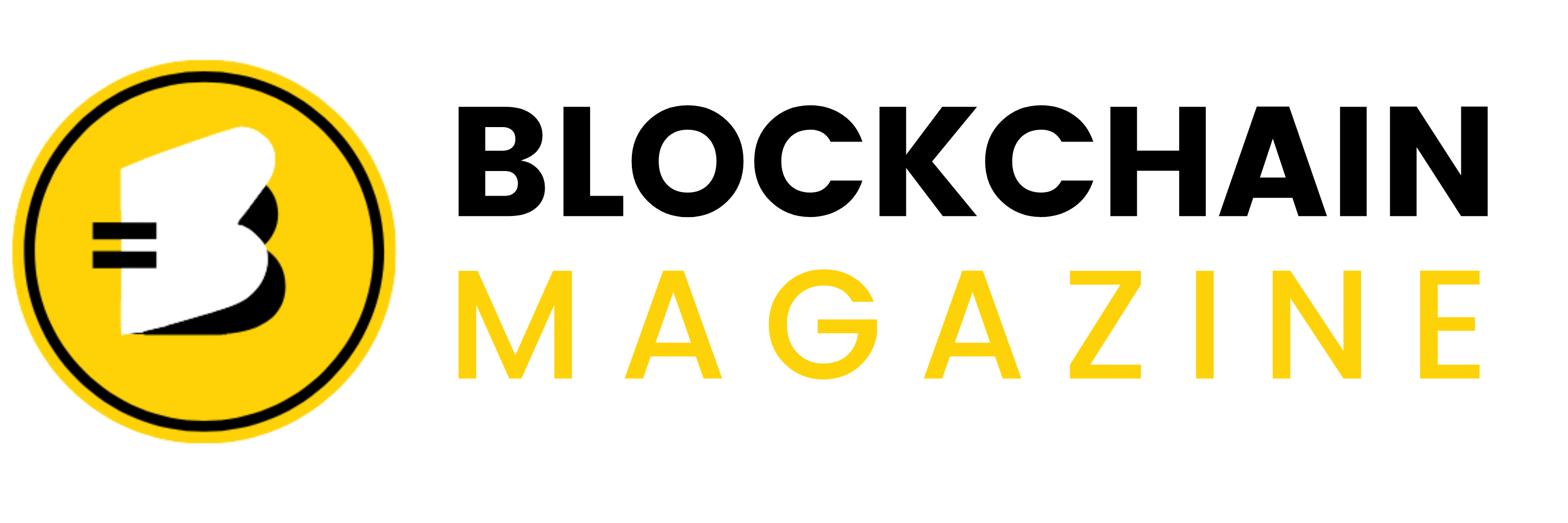
 Bitcoin
Bitcoin  Ethereum
Ethereum  XRP
XRP  Tether
Tether  Solana
Solana  USDC
USDC  Dogecoin
Dogecoin  Cardano
Cardano  Lido Staked Ether
Lido Staked Ether  TRON
TRON  Wrapped Bitcoin
Wrapped Bitcoin  Chainlink
Chainlink  Wrapped stETH
Wrapped stETH  Avalanche
Avalanche  Sui
Sui  Stellar
Stellar  Litecoin
Litecoin  Toncoin
Toncoin  Shiba Inu
Shiba Inu  LEO Token
LEO Token  Hedera
Hedera  USDS
USDS  Hyperliquid
Hyperliquid  Polkadot
Polkadot  WETH
WETH  MANTRA
MANTRA  Bitcoin Cash
Bitcoin Cash  Bitget Token
Bitget Token  Ethena USDe
Ethena USDe  Wrapped eETH
Wrapped eETH  Uniswap
Uniswap  Monero
Monero  NEAR Protocol
NEAR Protocol  Pepe
Pepe  WhiteBIT Coin
WhiteBIT Coin  Bittensor
Bittensor  Ondo
Ondo  Aave
Aave  Aptos
Aptos  Dai
Dai  Internet Computer
Internet Computer  Official Trump
Official Trump  Mantle
Mantle  Ethereum Classic
Ethereum Classic  Tokenize Xchange
Tokenize Xchange  OKB
OKB  Gate
Gate  sUSDS
sUSDS  Coinbase Wrapped BTC
Coinbase Wrapped BTC 